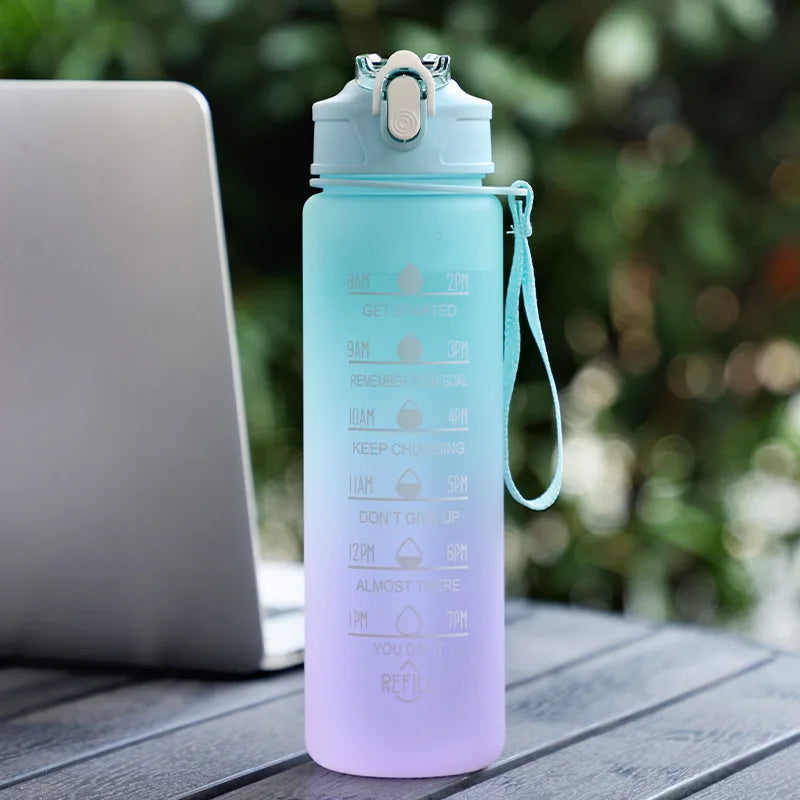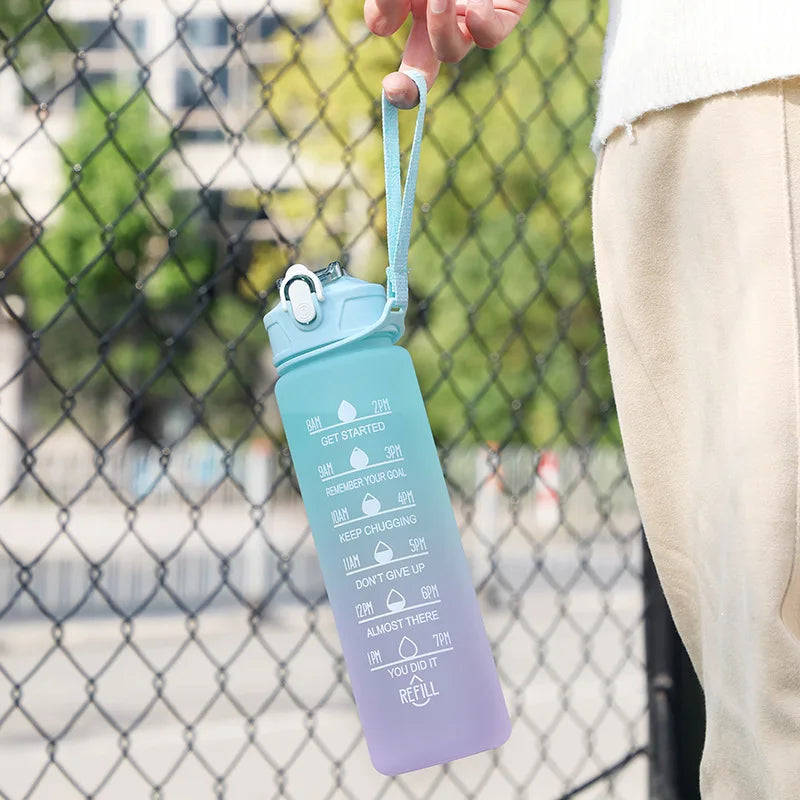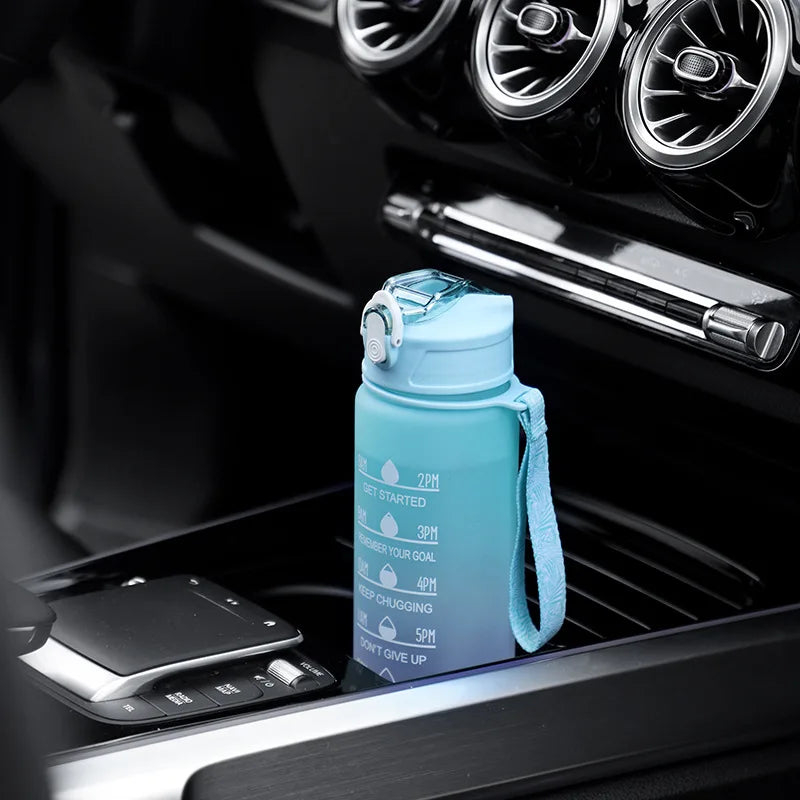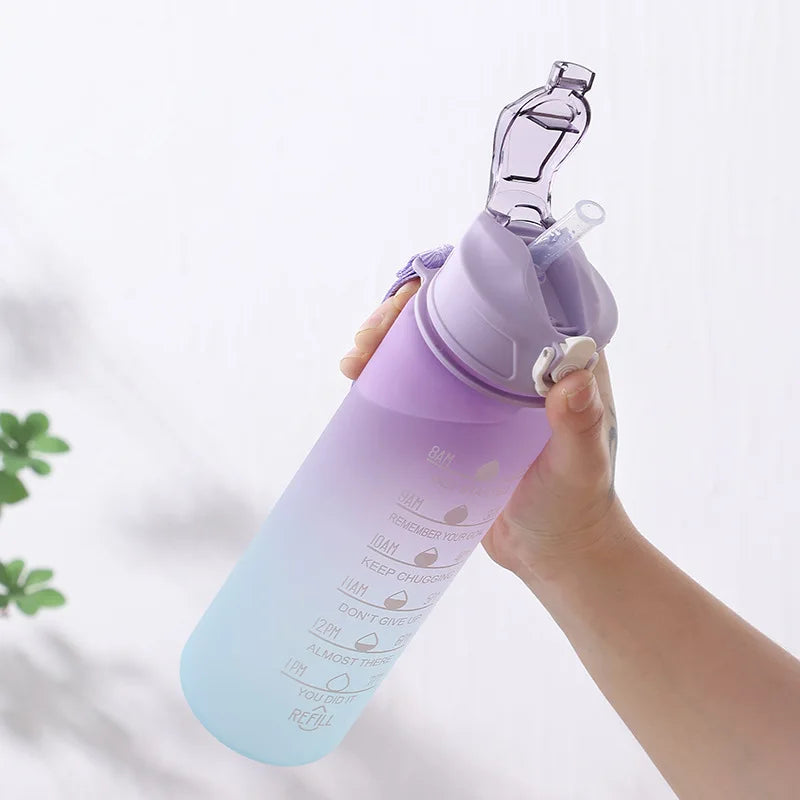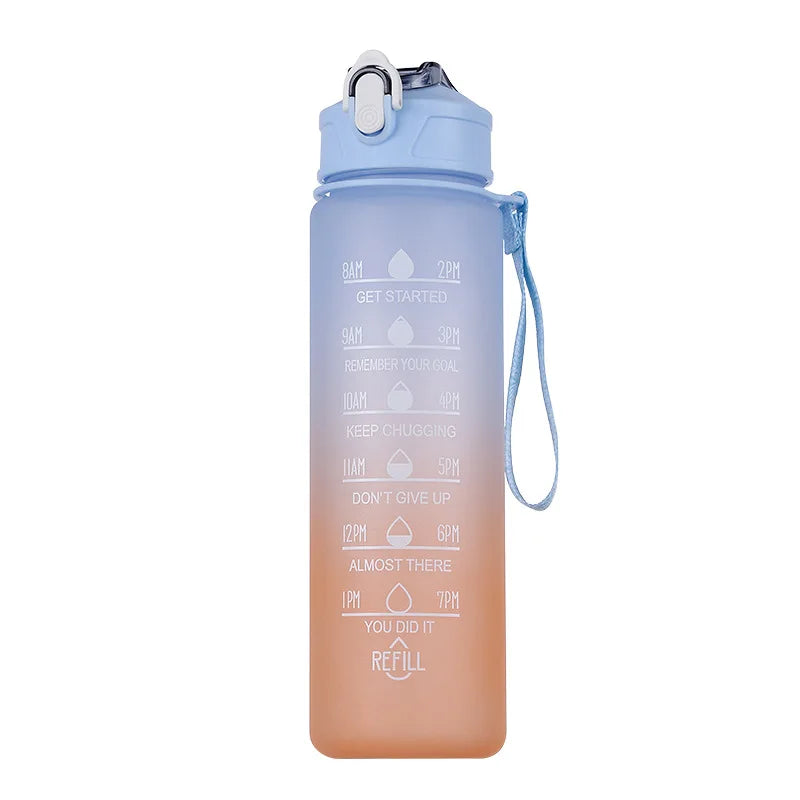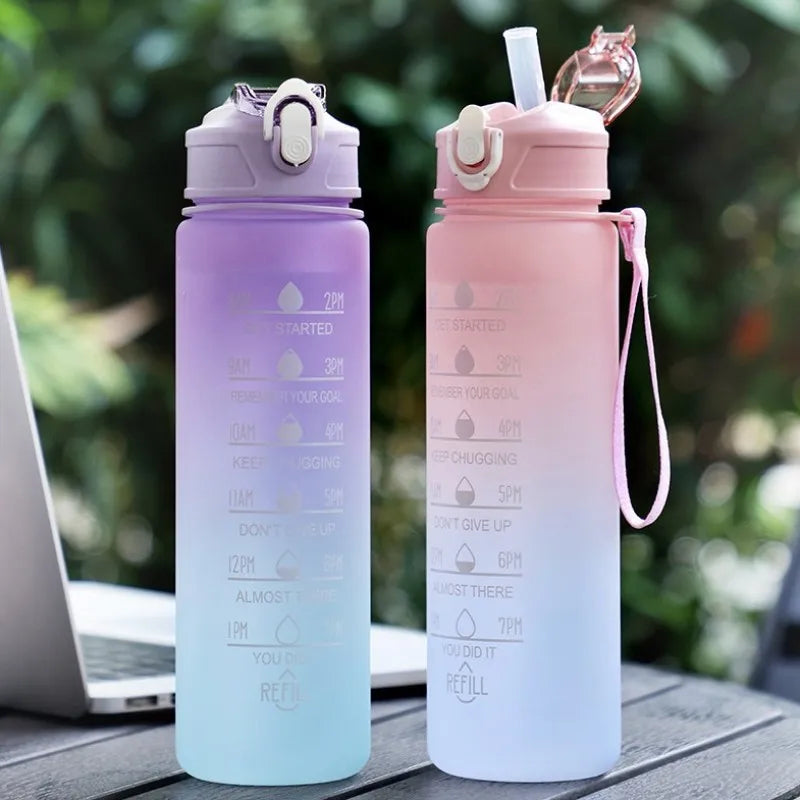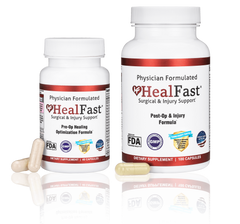

Bruising After Botox: Why It Happens and How to Prevent It

Key Takeaways:
- Bruising after Botox injections is common, caused by broken capillaries, and can be influenced by factors like individual variability, injection technique, and medications.
- Pre-treatment steps such as avoiding blood thinners, staying hydrated, and using arnica montana can help minimize bruising.
- Post-treatment care, including avoiding strenuous activity, applying cold compresses, and staying hydrated, can enhance healing and reduce bruising.
Bruising after Botox injections is a common concern for many patients seeking to enhance their appearance through this popular cosmetic procedure. While Botox can help reduce the appearance of wrinkles and fine lines, it's not uncommon to experience some degree of bruising post-treatment. Understanding the causes, prevention, and treatment of bruising can help patients confidently navigate their recovery.
At HealFast, we're committed to supporting your recovery journey with our advanced recovery supplements. Our two-part system, crafted by medical professionals, optimizes healing after surgeries or injuries, including cosmetic procedures like Botox. With over 30 carefully selected ingredients clinically proven to reduce bruising, swelling, and scarring, HealFast helps you recover faster and heal better.
In this article, we'll examine the science behind bruising after Botox, offering professional insights and supportive advice to help you manage and minimize this side effect.
Understanding Why Bruising Occurs After Botox
Bruising after Botox injections is a common side effect that many patients experience. But why does it happen? Let's break it down:
When a healthcare professional administers Botox, they use a needle to inject the neurotoxin into specific muscles. This process can cause tiny blood vessels, known as capillaries, to break. When these capillaries rupture, blood leaks into the surrounding tissue, resulting in a bruise.
Several factors can influence the likelihood and severity of bruising after Botox. These include:
- Individual Variability: People have different skin types and blood vessel structures, which can affect how easily bruising occurs.
- Injection Technique: The injector's skill and technique play a significant role. A more experienced practitioner may be able to minimize the risk of bruising.
- Medications and Supplements: Certain medications, like blood thinners and supplements that affect blood clotting, can increase the chances of bruising.
- Pre-existing Conditions: Conditions that affect blood clotting or vessel integrity can make bruising more likely.
How Common Is Bruising After Botox Treatments?
Bruising is a frequent side effect of Botox treatments, with studies reporting ecchymosis in 22% of patients due to needle-induced vessel fragility (Alam et al., Dermatol Surg, 2015). The fine needles can rupture superficial capillaries, especially in delicate areas like the periorbital region, increasing bruising by 15% in thinner-skinned individuals (Rzany et al., J Cosmet Dermatol, 2017).
Bruise duration varies, typically resolving within 5–10 days, though smaller gauge needles reduce ecchymosis persistence by 18% (Glogau et al., Plast Reconstr Surg, 2012). To lower risks, avoiding blood-thinning agents like NSAIDs 48 hours prior and applying cold compresses post-injection can constrict vessels, decreasing bruise incidence by 20% (Funt & Pavicic, Clin Cosmet Investig Dermatol, 2013).
Pre-Treatment Steps to Minimize Bruising
Preparing for Botox with targeted steps can significantly lower bruising risks, priming your skin for optimal results. Avoiding blood-thinning agents like NSAIDs and ginkgo biloba 5 to 7 days prior strengthens vascular integrity, potentially reducing bruise likelihood by 24% (Carruthers et al., Dermatol Surg, 2018).
Hydration enhances skin elasticity, with studies showing adequate water intake decreases bruise severity by 19% by bolstering dermal resilience (Wolf et al., Skin Res Technol, 2016). Arnica montana, taken 3 days pre-treatment, cuts bruise incidence by 16% through anti-inflammatory effects (Seeley et al., Arch Facial Plast Surg, 2006).
Prioritizing these measures – limiting thinners, hydrating well, and using arnica – sets a strong foundation for a bruise-minimized Botox experience.
Medications and Supplements to Avoid Before Botox
When preparing for a Botox treatment, it's crucial to be mindful of the medications and supplements you're taking, as some can increase the risk of bruising. Here's a rundown of what to steer clear of before your appointment:
- Blood Thinners: Medications like aspirin, ibuprofen, and warfarin can thin your blood, making bruising more likely. If you're on these medications for a medical condition, consult your doctor before stopping them.
- Non-Steroidal Anti-Inflammatory Drugs (NSAIDs): Similar to blood thinners, NSAIDs such as naproxen and celecoxib can increase bleeding risk. It's best to avoid these a week before your Botox session.
- Herbal Supplements: Some herbal supplements, including ginkgo biloba, ginseng, and garlic, have blood-thinning properties. While they might be beneficial for other health reasons, they can complicate your Botox recovery.
- Fish Oil and Omega-3 Fatty Acids: These popular supplements are known for their heart health benefits but can also increase bleeding tendencies. It's wise to pause these supplements a few days before your treatment.
- Vitamin E: Often touted for its antioxidant properties, Vitamin E can also thin the blood. Consider stopping its use a week before your Botox appointment.
- Alcohol: Alcohol can dilate blood vessels and increase bleeding risk. It's advisable to avoid alcohol for at least 24 hours before your Botox treatment.
Tips for Reducing Bruising After Botox
A few proactive steps can make a significant difference when minimizing bruising after Botox injections. Here's what you need to know:
- Stay Hydrated: Drinking plenty of water before and after your Botox treatment can help maintain healthy blood vessels, reducing the chances of bruising.
- Apply Ice: Immediately after your Botox injections, applying ice to the treated area can help constrict blood vessels and minimize bruising. Use ice for short intervals to avoid cold injury.
- Limit Physical Activity: Strenuous exercise and heavy lifting can increase blood flow and pressure, potentially leading to more bruising. Try to keep your activities light for the first 24 hours post-treatment.
- Elevate the Treated Area: If possible, keep the treated area elevated. This can help reduce swelling and bruising by improving blood flow from the injection site.
- Avoid Alcohol: Alcohol can dilate blood vessels and thin the blood, which may increase bruising. It's best to avoid drinking for at least 24 hours before and after your Botox session.
Post-Treatment Care for Faster Healing
After receiving Botox, proper post-treatment care can significantly enhance your healing process and minimize complications like bruising. Here are some key steps to follow:
- Avoid Strenuous Activity: Avoid heavy lifting or intense exercise for at least 24 hours post-treatment. These activities can increase blood flow to the treated area, potentially worsening bruising.
- Keep the Area Clean: Gently clean the injection sites as directed by your healthcare provider. Avoid harsh chemicals or scrubbing the area, which can irritate the skin and prolong healing.
- Apply Cold Compresses: A cold compress or ice pack can help reduce swelling and bruising. Apply it to the treated area for 10-15 minutes every hour for the first 24 hours.
- Stay Hydrated: Drinking plenty of water can aid your body's natural healing processes. Aim for at least eight 8-ounce glasses of water per day.
- Avoid Blood Thinners: Avoid medications and supplements that can thin your blood, such as aspirin, ibuprofen, and fish oil, unless prescribed by your doctor. These can increase the risk of bruising.
- Elevate the Treated Area: Keep the treated area elevated above your heart if possible. This can help reduce swelling and improve blood circulation.
Final Thoughts
Understanding and managing bruising is crucial for a smooth healing process as you recover after receiving Botox. As we've explored, while bruising is a common side effect, there are effective strategies to minimize its occurrence and severity.
At HealFast, we're dedicated to enhancing your recovery experience with our advanced supplements designed to reduce bruising, swelling, and scarring. Our two-part system, crafted by medical professionals, is your ally in not just recovering faster but healing better.
Read Also:
- Mommy Makeover Recovery: Supplements and Diet Essentials
- Combining Protein Supplements with Diet for Optimal Muscle Repair After Surgery
- The Benefits of Antioxidant Supplements Post-BBL Surgery
Frequently Asked Questions About Bruising After Botox
Is bruising common after Botox injections?
Bruising after Botox injections is relatively standard but not inevitable. The procedure involves needles penetrating the skin, which can cause minor blood vessels to break, leading to bruising. Studies suggest that up to 20% to 30% of patients may experience some degree of bruising. While this can be a regular part of the process, HealFast's advanced recovery supplements can help minimize this side effect by promoting faster healing and reducing the severity of bruising.
Why do some people bruise after Botox?
Several factors can contribute to bruising after Botox injections. These include the patient's skin type, the injector's skill, the injection's location, and the use of blood-thinning medications or supplements. Additionally, individuals with a higher number of visible blood vessels or those who bruise easily may be more prone to bruising. HealFast's carefully selected ingredients work to strengthen blood vessels and improve circulation, which can help reduce the likelihood of bruising.
How can I prevent bruising post-Botox treatment?
To minimize the risk of bruising after Botox, consider the following steps:
- Avoid blood-thinning medications and supplements like aspirin, ibuprofen, and fish oil for at least a week before your treatment.
- Apply ice to the treatment area before and after the injections to constrict blood vessels.
- Choose an experienced injector who uses proper techniques to minimize trauma to the skin.
- Consider using HealFast's pre-operative supplements, which are designed to prepare your body for the procedure and reduce the risk of complications like bruising.
What should I do if I get a bruise after Botox?
If you notice a bruise after your Botox treatment, don't panic. Most bruises will heal independently within a few days to a week. To help speed up the healing process, you can:
- Apply a cold compress to the affected area for 24 to 48 hours to reduce swelling and constrict blood vessels.
- After 48 hours, switch to a warm compress to promote blood flow and healing.
- Take HealFast's post-operative supplements, which are formulated to accelerate the healing process and reduce the appearance of bruises.
How long do bruises from Botox usually last?
The duration of bruises from Botox can vary depending on the individual and the severity of the bruise. Generally, most bruises will start to fade within a few days and should be completely gone within one to two weeks. However, with the help of HealFast's recovery supplements, many patients report seeing a noticeable reduction in the appearance of bruises within just a few days.
Can I apply makeup to cover bruises from Botox?
Yes, you can use makeup to conceal bruises from Botox injections. Wait until the area is no longer swollen or tender before applying makeup. Choose a color-correcting concealer to neutralize the purple or blue tones of the bruise, followed by a skin-tone matching concealer or foundation. Remember, while makeup can help hide the appearance of bruises, HealFast's supplements work from the inside out to promote faster healing and reduce the need for camouflage.
Sources:
- Wang, X., Quinn, P. J., & Yan, Y. (1999). Vitamin E inhibition of platelet aggregation is independent of antioxidant activity. Biochemical and Biophysical Research Communications, 263(2), 440–444. https://doi.org/10.1006/bbrc.1999.1387
- Berger, Mette M et al. “Trace element supplementation after major burns modulates antioxidant status and clinical course by way of increased tissue trace element concentrations.” The American journal of clinical nutrition vol. 85,5 (2007): 1293-300. doi:10.1093/ajcn/85.5.1293
- HealFast. Clinical Nutrition for Surgical and Injury Recovery. HealFast, 2022, https://cdn.shopify.com/s/files/1/0606/1948/9475/files/HealFast_-_Clinical_Nutrition_for_Surgical_and_Injury_Recovery.pdf?v=1643616939.

- One of the most followed doctors online with 3.5+ million followers and 1 billion+ views in 2024 (Instagram, YouTube, TikTok, and Facebook)
- Board Certified Anesthesiologist and Clinical Assistant Professor who frequently teaches medical students, residents, and other physicians in medical school and hospital settings.
- Speaker and medical researcher having published 1 book, 3 book chapters, and over 57 scientific articles. Made over 100 presentations at national and international medical conferences on topics ranging from healthcare innovation, to nutrition, to patient safety.
- Serial entrepreneur having launched several healthcare companies with a track record of innovation within healthcare systems

Myro Figura, M.D.
- One of the most followed doctors online with 3.5+ million followers and 1 billion+ views in 2024 (Instagram, YouTube, TikTok, and Facebook)
- Board Certified Anesthesiologist and Clinical Assistant Professor who frequently teaches medical students, residents, and other physicians in medical school and hospital settings.
- Speaker and medical researcher having published 1 book, 3 book chapters, and over 57 scientific articles. Made over 100 presentations at national and international medical conferences on topics ranging from healthcare innovation, to nutrition, to patient safety.
- Serial entrepreneur having launched several healthcare companies with a track record of innovation within healthcare systems

